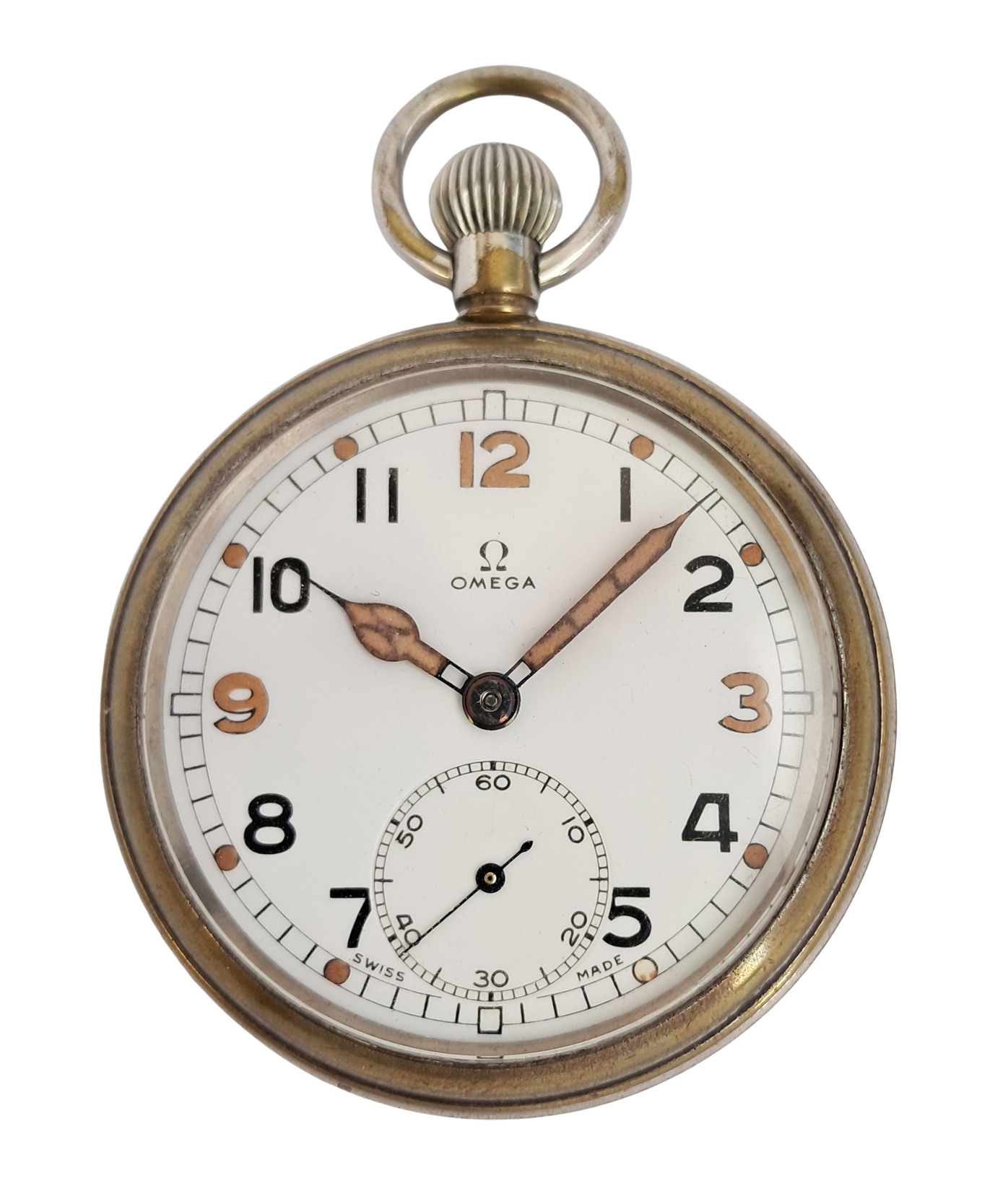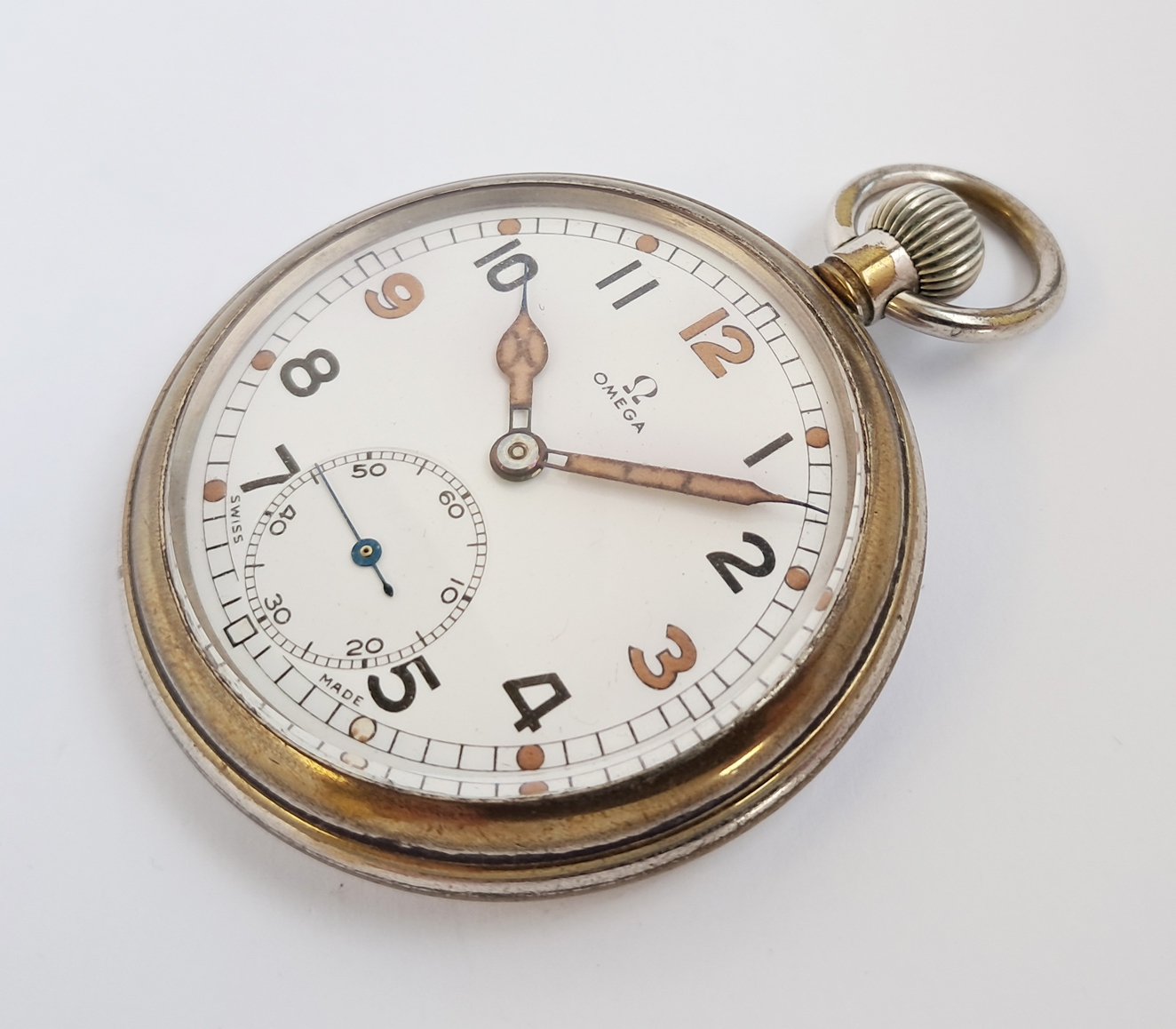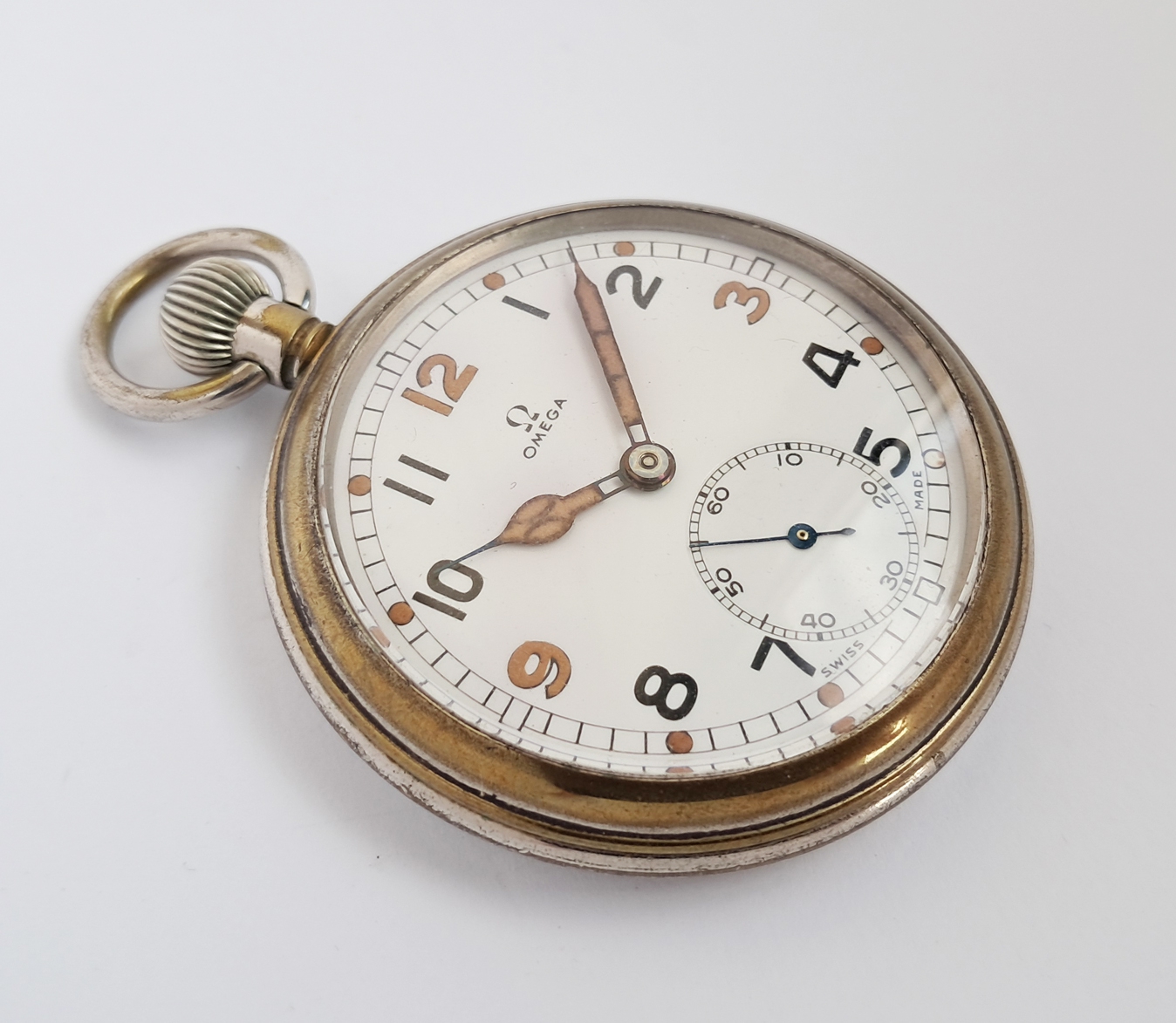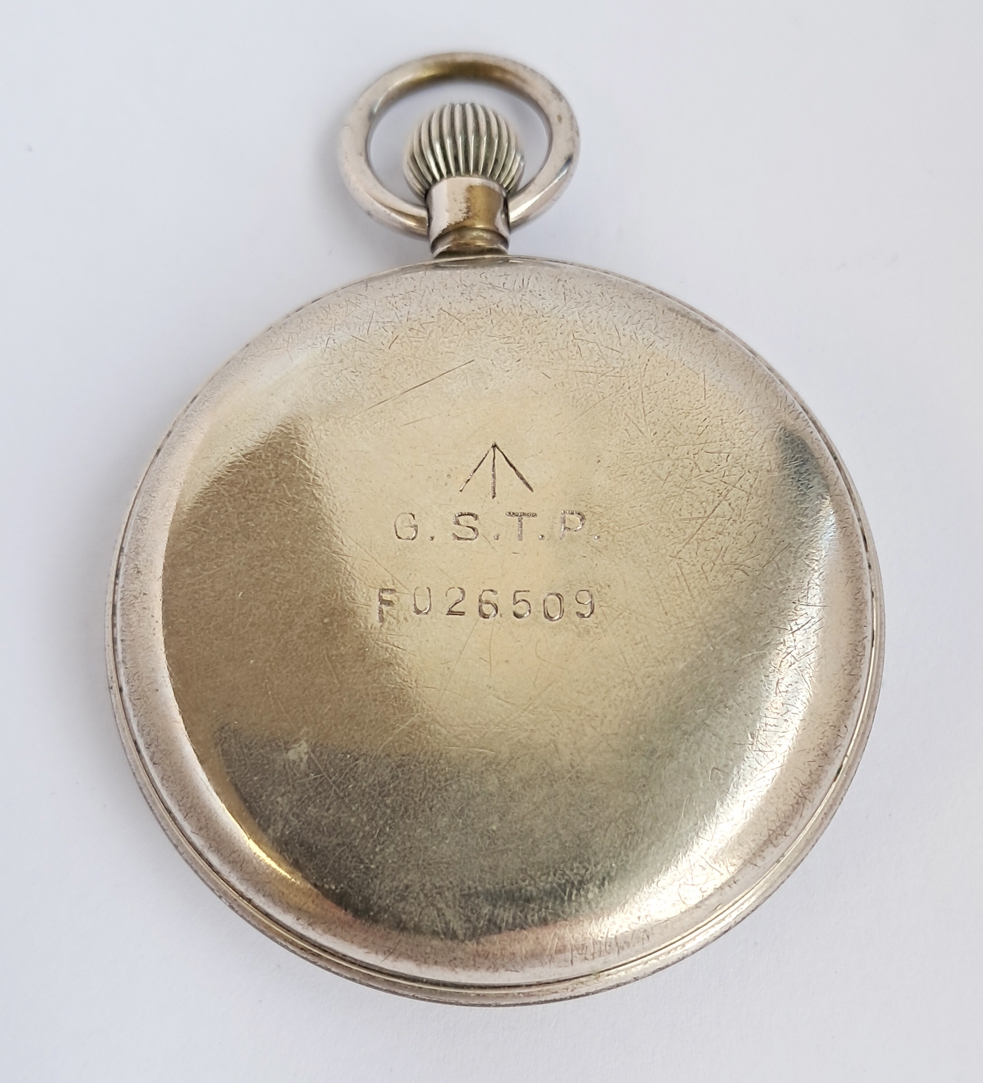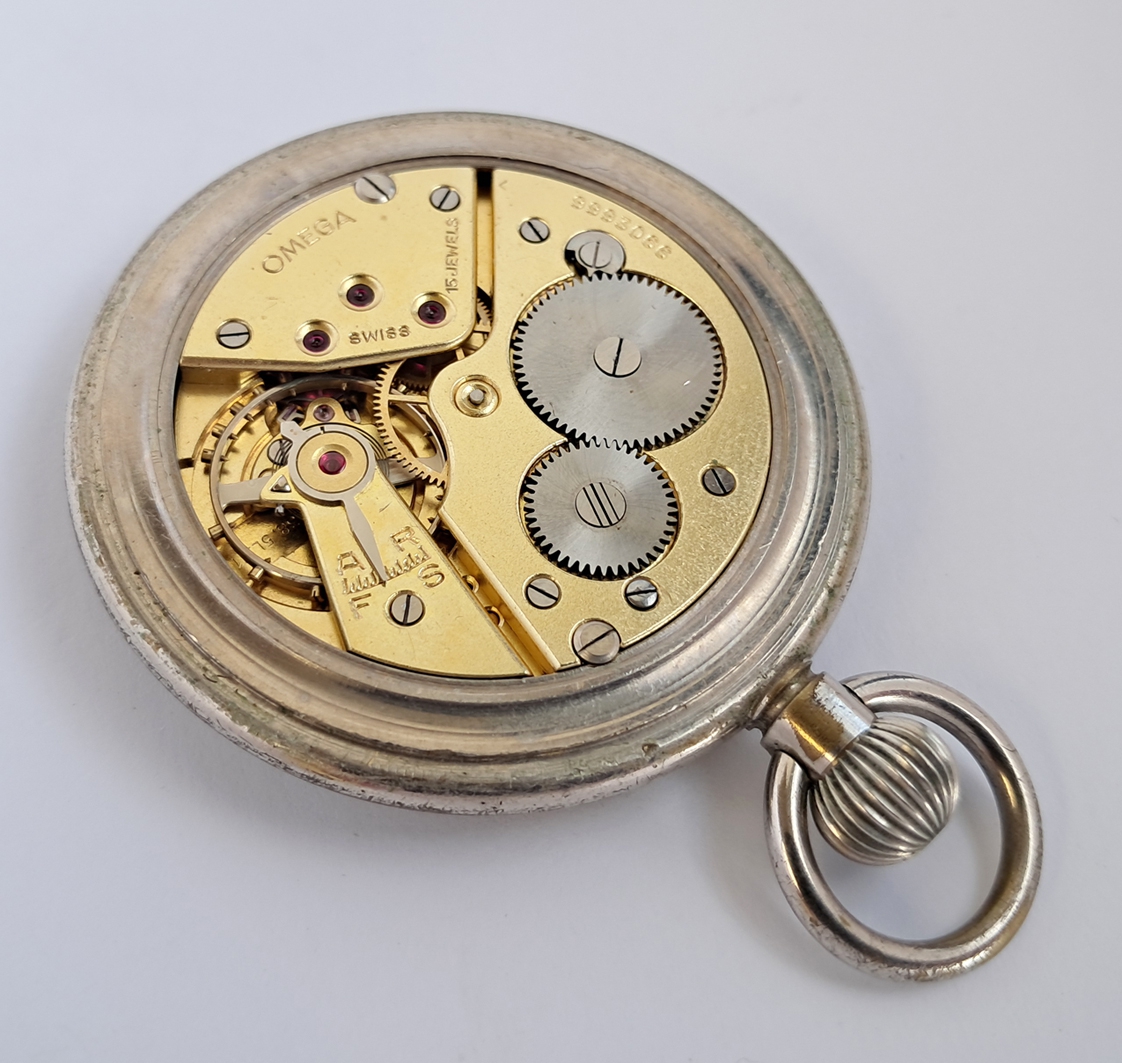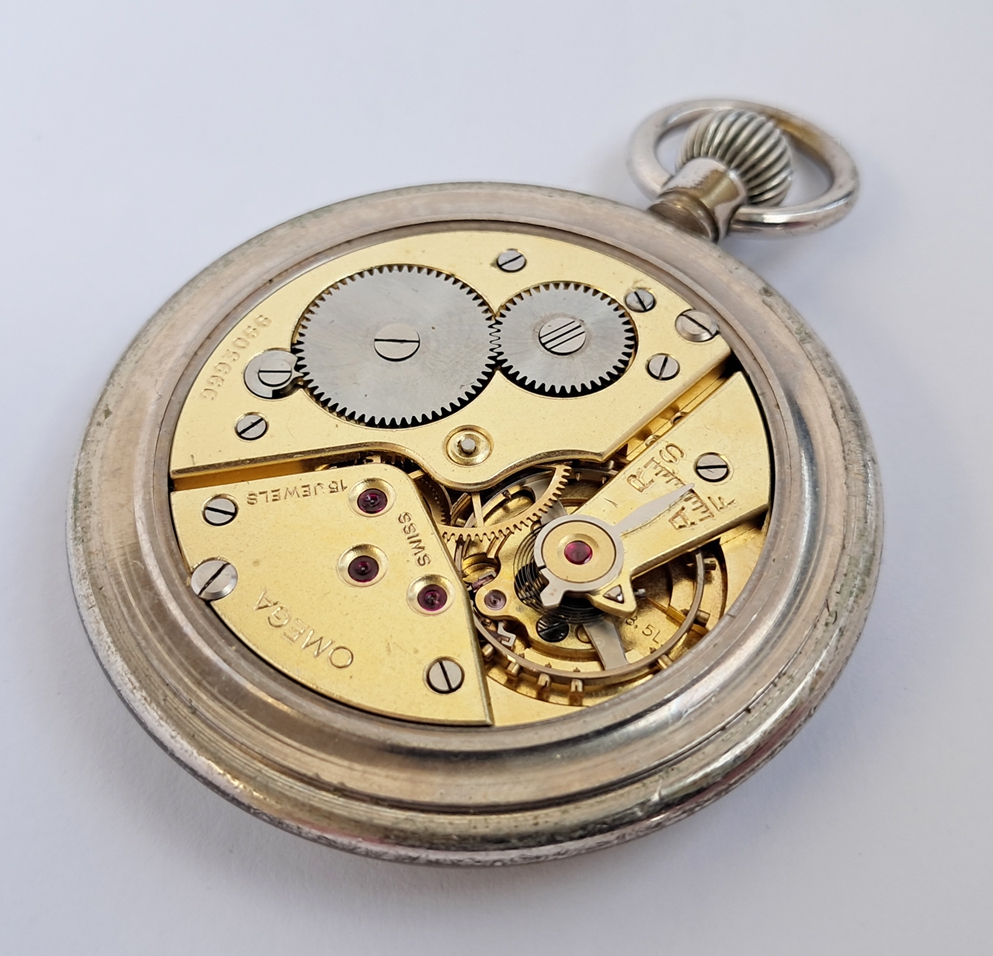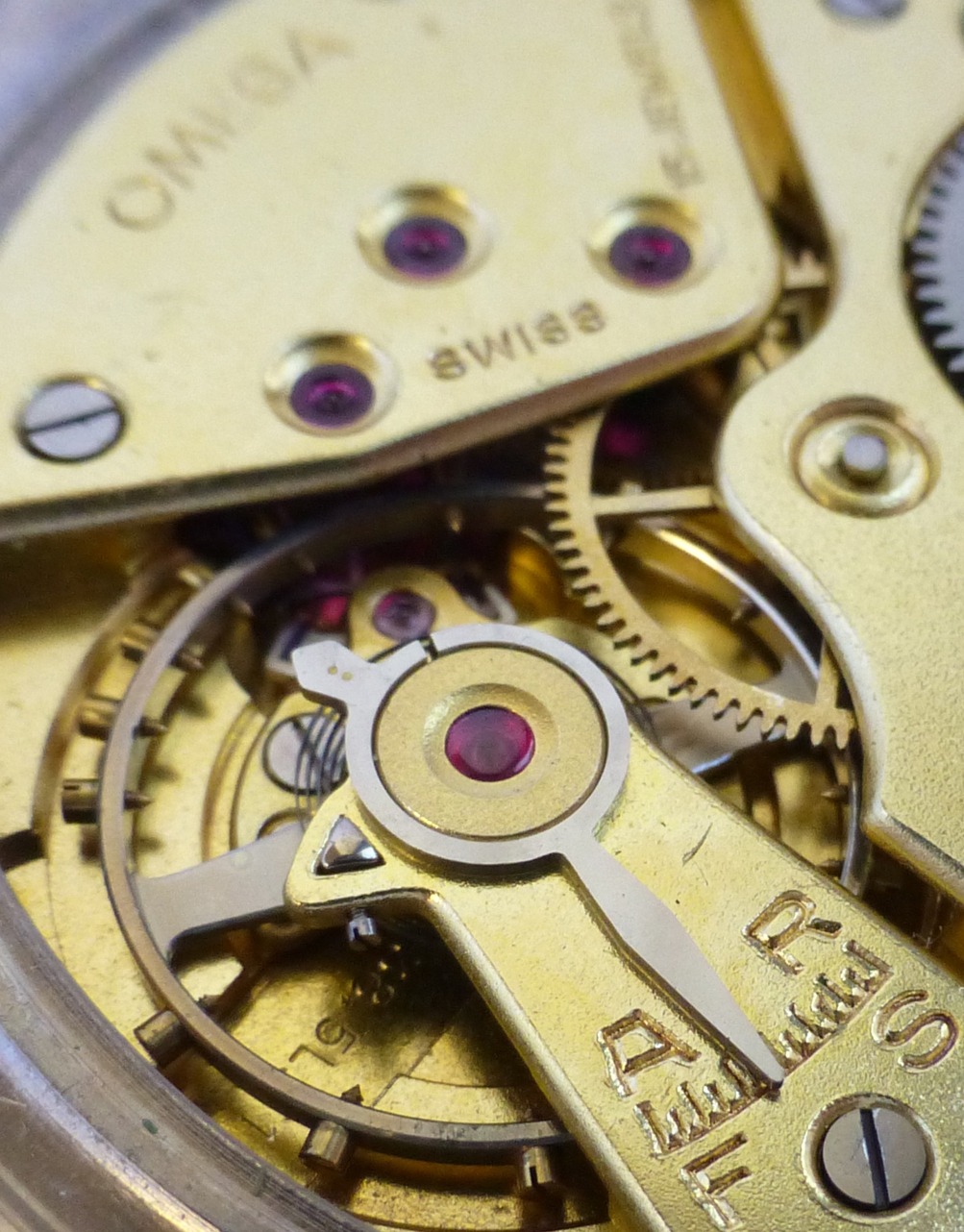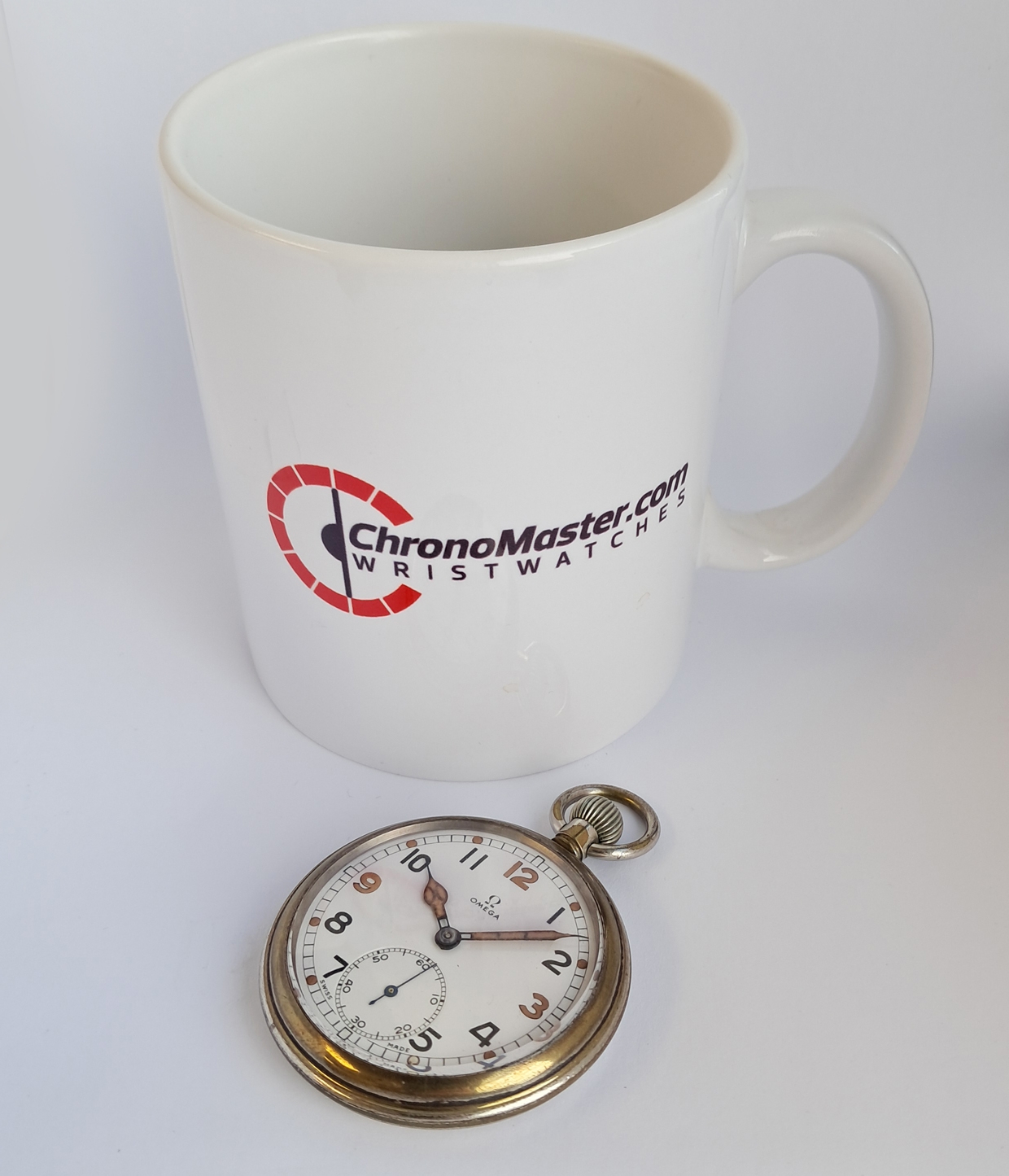Omega Omega GSTP WWII British Military Issued Pocket Watch NWW 2296
Omega GSTP WWII British Military Issued Pocket Watch
Omega GSTP pocket produced in house by Omega from 1939 through 1945.
G.S.T.P. stands for General Services Trade Pattern. These G.S.T.P. watches purchased by the British government for the armed forces and since watches in those days were not mass produced, many manufacturers were issued contracts to build G.S.T.P. watches. They were made to specific design criteria and military grade standard as requested by the MOD. As a result, all of the G.S.T.P. watches are similar looking to each other despite them being made by different manufacturers. Some of the manufacturers were quality producers such as the as Omega Jaeger LeCoultre and Rolex. These brands have become desirable collectors items
Chrome plated base metal nickel case, with base metal showing through meaning that this has most likely been used on the battlefield. White dial, faded numeral luminosity, and faded luminous fill in the hands. Hand winding Omega in house movement. Good running condition
Key Characteristics
Additional Product Details
Omega Watches. Founded at La Chaux-de-Fonds, Switzerland in 1848 by 23-year-old Louis Brandt who assembled key-wound precision pocket watches from parts supplied by local craftsmen. He travelled throughout Europe selling his watches from Italy to Scandinavia by way of England, his chief market. After Louis Brandt's death in 1879, his two sons Louis-Paul and Cesar, troubled by irregular deliveries of questionable quality, abandoned the unsatisfactory assembly workshop system in favour of in-house manufacturing and total production control. Due to the greater supply of manpower, communications and energy in Bienne, the enterprise moved into a small factory in January 1880, then bought the entire building in December. Two years later the company moved into a converted spinning-factory in the Gurzelen district of Bienne, where headquarters are still situated today. Their first series-produced calibres, Labrador and Gurzelen, as well as, the famous Omega calibre of 1894, would ensure the brand's marketing success. Louis-Paul and Cesar Brandt both died in 1903, leaving one of Switzerland's largest watch companies - with 240,000 watches produced annually and employing 800 people - in the hands of four young people, the oldest of whom, Paul-Emile Brandt, was not yet 24. Considered to be the great architect and builder of OMEGA, Paul-Emile's influence would be felt over the next half-century. The economic difficulties brought on by the First World War would lead him to work actively from 1925 toward the union of OMEGA and Tissot, then to their merger in 1930 within the group SSIH, Geneva. Under his leadership, then that of Joseph Reiser beginning in 1955, the SSIH Group continued to grow and multiply, absorbing or creating some fifty companies. By the seventies, SSIH had become Switzerland's number one producer of finished watches and number three in the world. Weakened by the severe monetary crisis and recession of 1975 to 1980, SSIH was bailed out by the banks in 1981. Switzerland's other watchmaking giant ASUAG, principal producer of movement blanks and owner of the Longines, Rado and Swatch brands, was saved in similar fashion one year later. After drastic financial cleansing and a restructuring of the two groups' R&D and production operations at the ETA complex in Granges, the two giants merged in 1983 to form the Holding ASUAG-SSIH. In 1985 the holding company was taken over by a group of private investors under the strategy and leadership of Nicolas Hayek. Immediately renamed SMH, Société suisse de Microélectronique et d'Horlogerie, the new group achieved rapid growth and success to become today's top watch producer in the world. Named Swatch Group in 1998, it now includes Blancpain and Breguet. Dynamic and flourishing, OMEGA remains one of its most prestigious flagship brands

